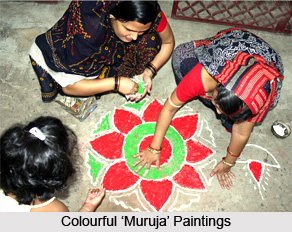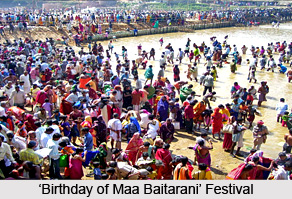 Art and culture of Jajpur District, which is located in Odisha boasts of a long and diverse cultural history which is a beautiful blend of philosophical, spiritual and the creative instincts of the regional inhabitants of this region. This Indian district possesses great cultural heritage which is revealed to in the vibrant forms of numerous types of art-forms. Also referred to as a `heritage district`, Jajpur is amongst the ancient cities belonging to Odisha which is home to some archaeological remnants. `Navigaya` is yet another name for Jajpur District, and it is visited by innumerable travellers for the purpose of offering prayers or `sraddha` on the banks of Baitarani River.
Art and culture of Jajpur District, which is located in Odisha boasts of a long and diverse cultural history which is a beautiful blend of philosophical, spiritual and the creative instincts of the regional inhabitants of this region. This Indian district possesses great cultural heritage which is revealed to in the vibrant forms of numerous types of art-forms. Also referred to as a `heritage district`, Jajpur is amongst the ancient cities belonging to Odisha which is home to some archaeological remnants. `Navigaya` is yet another name for Jajpur District, and it is visited by innumerable travellers for the purpose of offering prayers or `sraddha` on the banks of Baitarani River.
Sculptural Art of Jajpur District
Jajpur District consists of magnificent instances of sculptural art and architectural grandeur. Excavations carried out in part of this district have helped uncover the ruins belonging to a probable pre-historic civilization in the eastern Indian state of Odisha. The archaeological relics have been observed at areas like Baraha Temple, Ratnagiri Temple, Udaigiri Caves, Saptamatruka Temple, Trilochaneswar Mandir and others. Starting from the pre-historic era, these rare sculptures date till the medieval period. A majority of the architecture splendour at Jajpur is manifested through its numerous temples which involve Siddheswar Temple, Biraja Temple, Jagannath Temple and so on.
 Fairs and Festivals of Jajpur District
Fairs and Festivals of Jajpur District
A large variety of fairs and festivals are observed in Jajpur District, particularly during the month of `Margasira`. The womenfolk offer prayers to Goddess Lakshmi in this festive occasion to invoke the blessings of the deity for a good harvest season. White murals adorn the mud walls and floors of the local homes during this festival. White rice paste is employed to create these drawings. Known as `Chita` or `Jhoti`, their patterns are mystical and are created to establish a connection between the material world and spiritual world.
During the sacred month of `Kartika`, the regional women practise penance and paint `muruja` on the floor with the aide of numerous colours Dry leaves are crushed to achieve the green colour while stones are grinded to collect the white hue used for such painting. Yellow colour is attained from marigold flowers and black is collected from burnt coconut shells. This is drawn near the `Tulasi Chaura`, in the style of `Mandala`. The local ladies perform different rituals throughout the year, to pray to their deities for prosperity and harmony. `Chandan Purnima`, Car Festival of Lord Jagannath, Makar Mela, Akshaya Trutia, Birthday of Maa Baitarani and several others are amongst the other festivals celebrated here.
Languages used in Jajpur District
Odiya language is said to be amongst the most ancient languages utilized in this part of the nation. However, Urdu is spoken by only 10 percent of the regional people while different tribal dialects are employed by about 9 to 10 percent of Jajpur`s residents, for communication.
Jajpur District is the hometown of several literary geniuses and painters. The Jhoti, Muruja and Chita are the various streams of painting existent in the Jajpur school of painting. Some of the talented literary personalities belonging to this district include Birupakshya Kar, Manjula Krushna Prasad Basu, Braja Sundar, Abimanyu Samanta Singhar, essayist Baikuntha Nath Rath, dramatist Kamapal Mishra, fiction writer Govind Das, etc. `Ghoda Nacha`, `Daskathia` and `Pala` are some of the most popular elements of the local culture of Jajpur District.




